With lavender plants — a short introduction to this piece.
Wondering what to do with your lavender plants this fall to protect them through winter – and keep them healthy and strong for next year?
Lavender has one of the longest blooming cycles of any perennial. With consistent deadheading and good care, plants can sometimes bloom three to four times in a single growing season. But as fall settles in, the way you care for your lavender becomes critical.
Taking the right steps now will prepare plants to handle the cold months ahead and help them return stronger in spring. On the other hand, a few wrong moves – and you can put lavender at risk of winter damage or even death.

With fall lavender care in mind, here is a detailed look at the do’s and don’ts of lavender care in the fall. In the end, by simply focusing on a few simple but key tasks – and knowing what chores to avoid – you can ensure your plants survive the cold and thrive again next year!
What To Do With Lavender Plants In The Fall
Deadheading Old Lavender Blooms
The very first task with fall lavender care is deadheading. Deadheading simply means cutting off old or dying blooms. While it might seem like a job meant only to tidy up plants, it actually plays an important role in their health.
When spent flowers remain, lavender continues to send energy to them. It does this trying to heal and support the blooms. But even more, once the flower heads fade, the plant also naturally starts putting energy into producing seeds.
While that might be useful for propagation, it drains the plant at a time when it needs to be concentrating on strengthening its roots. And it can leave it weak for winter, and for next year’s blooms.
By removing fading blooms, you redirect the plant’s resources back into root development. Stronger roots not only help the plant bloom better the following year, but they are also essential for surviving the constant freeze-thaw cycles of winter.
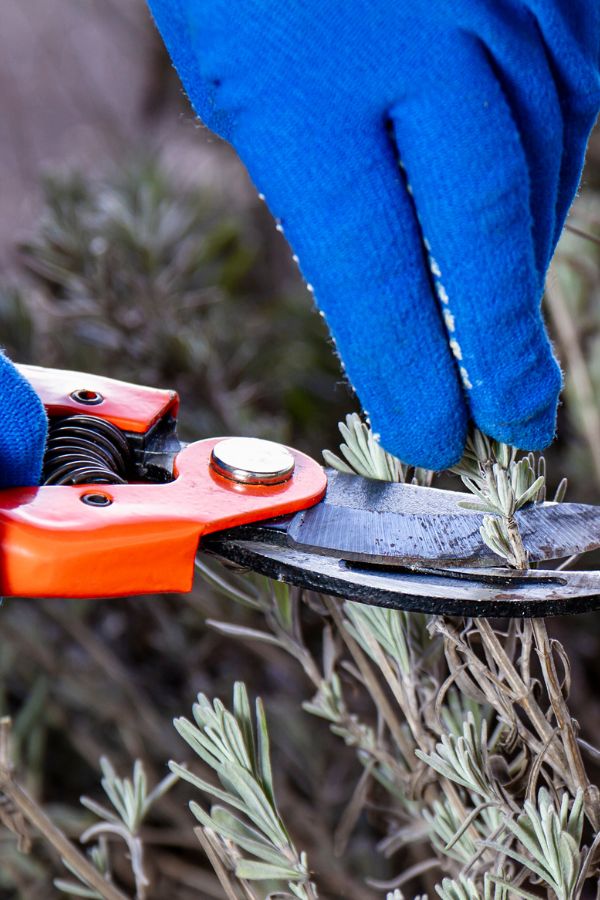

To deadhead properly, use clean, sharp pruners or garden scissors and cut just below the bloom. Do this as soon as the flowers begin to brown or look ragged. A few minutes of trimming now will make a big difference for next year’s growth.
Why You Shouldn’t Prune Heavily In The Fall
While deadheading is important before winter, heavy pruning is not! Pruning is often one of the biggest fall tasks for many perennials, but lavender is different. Unlike other plants that benefit from a fall trim, lavender suffers when pruned hard before winter.
Cutting back too much in fall can stress lavender, leaving it weak going into the cold season. Even worse, heavy pruning can spark new growth late in the year. These tender shoots don’t have time to harden off before frost hits, and they usually die back quickly. In many cases, the stress can damage the entire plant.
Instead of giving lavender a major haircut, leave heavy pruning for spring. That is when plants are actively growing and able to recover from cuts. In fall, you can do some light shaping if needed. But only enough to remove straggly stems or give the plant a neat appearance. Keep the trimming minimal.
Gardeners that live in more northern zones (like we do here at OWG) should especially resist the urge to prune in fall since the harsh winter cold is even more unforgiving.


Avoid Dividing Lavender Plants In The Fall
Many perennials, such as daylilies or hostas, can easily be divided in fall to create new plants. Lavender, however, is not one of them.
Lavender grows from a woody base that is more like a shrub than a soft perennial. Attempting to dig it up and split the roots usually ends in disaster. Quite simply, the plant does not tolerate disturbance well. Most divided lavender plants will simply die.
If your lavender has grown too large for its space, it’s better to wait until spring and prune it back heavily at that time. Be aware, though, that this kind of pruning will likely delay blooming for at least a year. Still, it’s far less risky than trying to divide the plant in fall.
Watering Lavender In Fall
Another key area of fall care is watering. Lavender naturally prefers drier soil and does not handle excess moisture well. During the growing season, light but infrequent watering is usually enough, especially if the soil drains well.
As fall arrives, watering should slow down even more. Unless your region is experiencing a severe drought, lavender usually doesn’t need additional water during autumn.
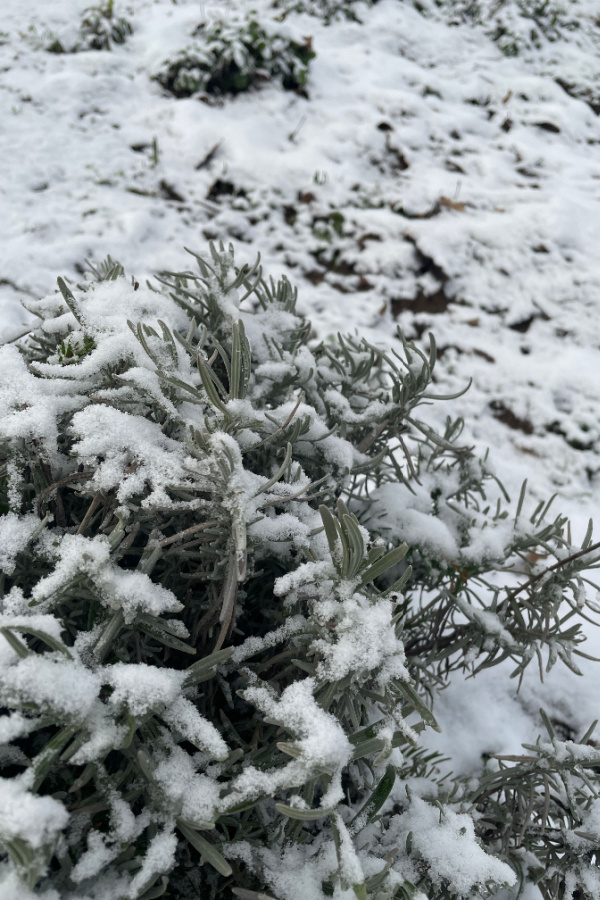
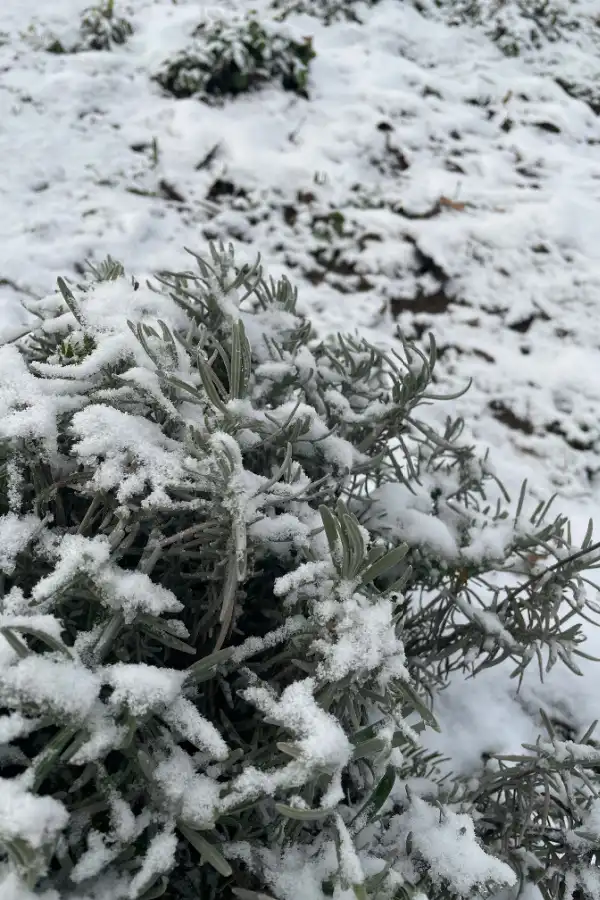
Too much moisture in the soil increases the risk of root rot, mildew, and fungal diseases. Cooler temperatures and weaker sunlight in fall mean water evaporates more slowly. This makes it even easier for soil to stay too wet.
If the soil around your lavender feels dry several inches down, a light watering is fine. Otherwise, let nature take care of it.
Skip The Fertilizer For Lavender Plants In The Fall
Lavender is not a heavy feeder to begin with, and fall is definitely not the time to apply fertilizer. Fertilizer can stimulate plants to put on fresh growth late in the season, which weakens them right before winter. This tender growth is almost guaranteed to die back once freezing weather sets in.
Instead of using commercial fertilizer, you can give lavender a light boost with compost. Once the plant has gone fully dormant, spread one to two inches of compost around its base. Compost breaks down slowly, releasing nutrients in small amounts.

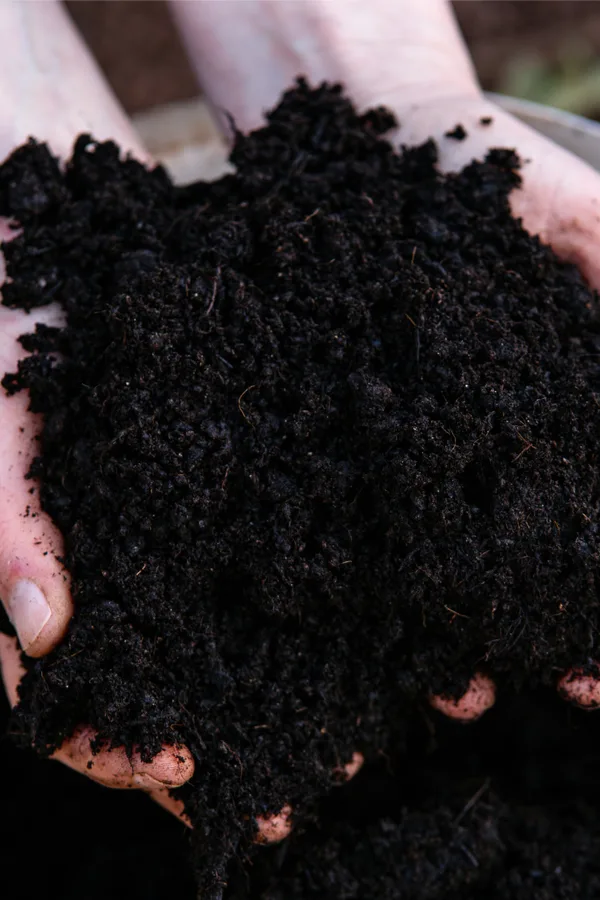
This is enough to provide steady nutrition without forcing unwanted late growth. The compost layer also improves the soil structure around lavender, which is especially helpful if your soil is heavy or clay-like. Just be sure not to pile compost against the woody stems, as this can cause rot.
Adding Mulch For Winter Protection
In addition to compost, applying mulch in late fall helps lavender survive the harsh swings of winter. The constant freezing and thawing of soil can heave plants upward, damaging roots. A layer of mulch acts as insulation, keeping soil temperatures more stable.
Straw, shredded leaves, pine needles, or fine bark mulch all work well. Apply a layer two to three inches thick around the base of the plant. Just as with compost, avoid pressing mulch directly against the main stems to prevent mold or mildew issues.
This step is particularly important for gardeners in colder climates. Even though lavender is hardy, it struggles when roots are exposed to wide temperature shifts.
What About Lavender Plants Growing In Pots In The Fall?
If you grow lavender in containers, special care will be needed in fall and winter. Pots don’t provide the same level of insulation as the ground, so roots are far more vulnerable to freezing.
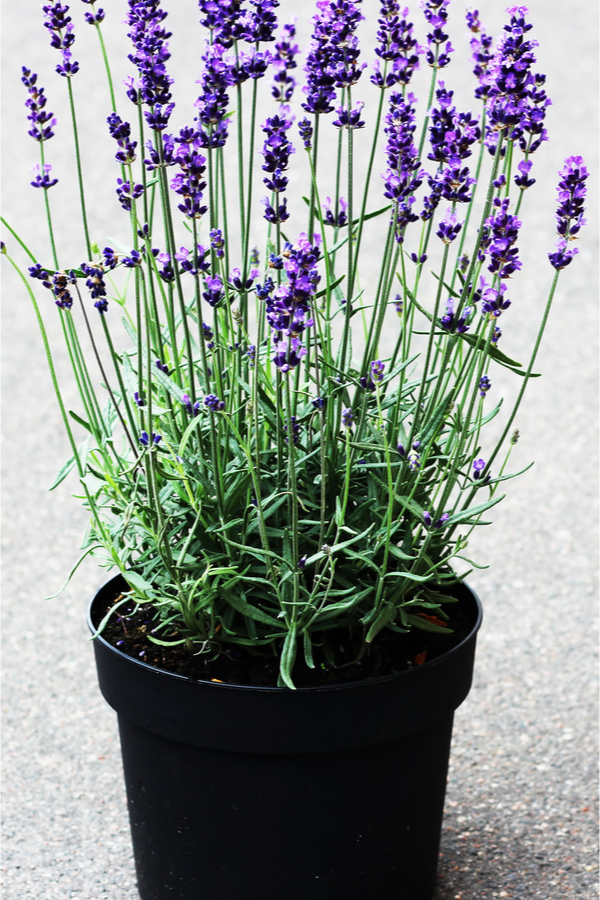
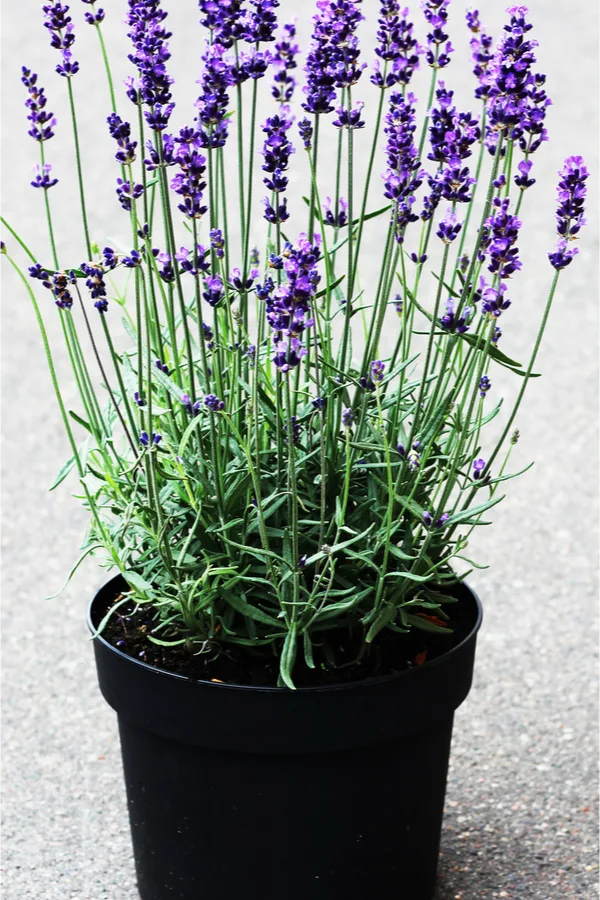
You have two options to protect potted lavender. The first is to bring the pots indoors once temperatures consistently dip below freezing. A cool but sheltered spot, such as an unheated garage, shed, or basement, works best.
Let the plant go dormant, and water only sparingly. It’s best to water about once a month to keep roots from completely drying out.
The second option is to plant the entire pot into the ground before winter. By burying the container, the soil insulates the roots naturally. In spring, you can dig the pot back up and continue growing the plant in its container. This method works especially well if you don’t have indoor space to overwinter pot.
Here is to taking care of your lavender plants this fall – and to having healthy, big blooming plants next spring, summer and fall! Happy Gardening – Jim & Mary.
Old World Garden
Jim and Mary Competti have been writing gardening, DIY and recipe articles and books for over 15 years from their 46 acre Ohio farm. The two are frequent speakers on all things gardening and love to travel in their spare time.
As always, feel free to email us at thefarm@owgarden.com with comments, questions, or to simply say hello! You can sign up for our free email list in the subscribe now box in the middle of this article. Follow us on Facebook here : OWG Facebook. This article may contain affiliate links.
With lavender plants appears here to highlight key ideas for readers.

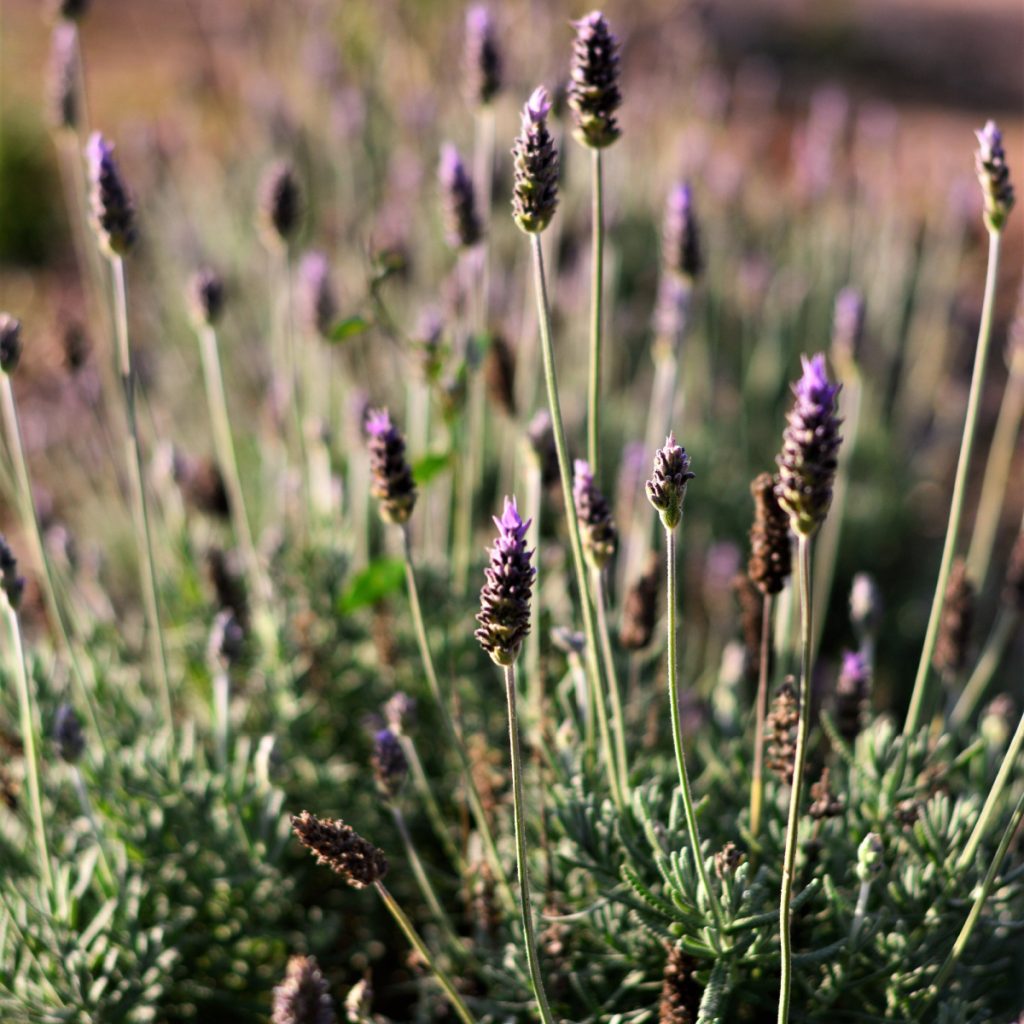
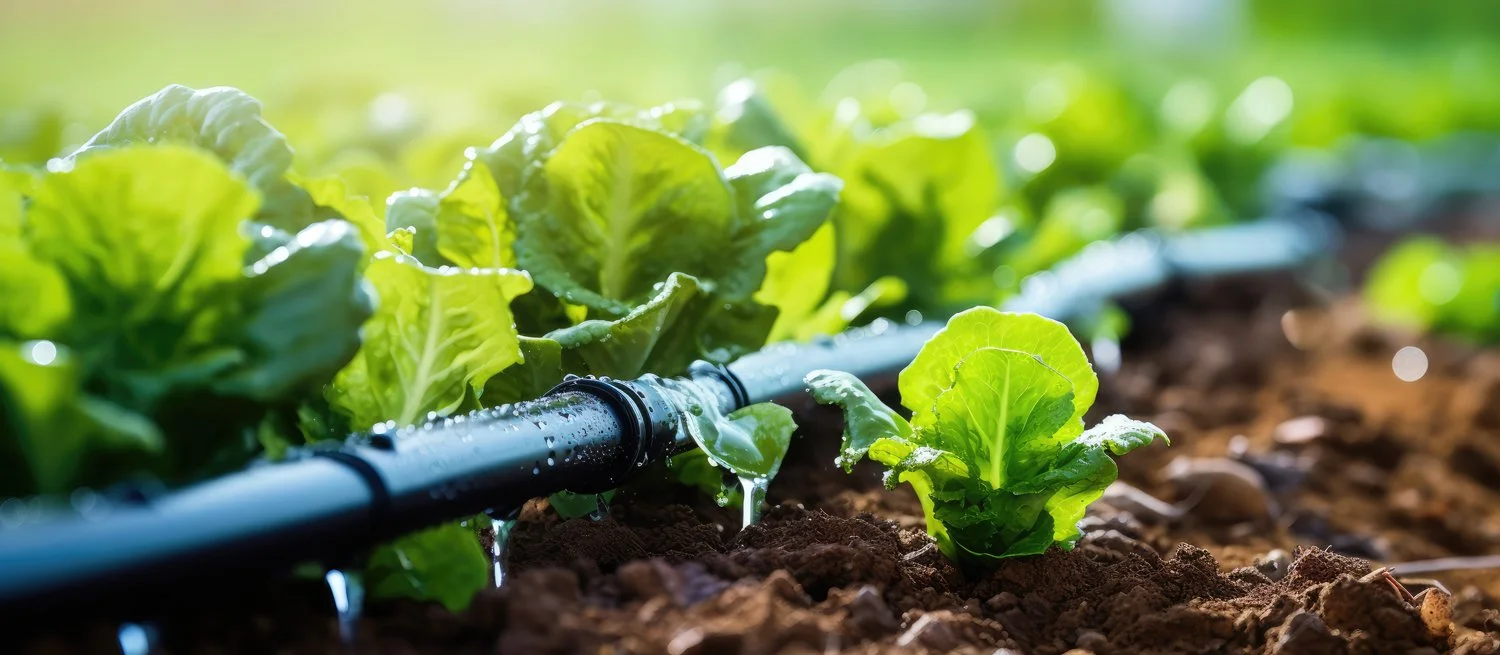








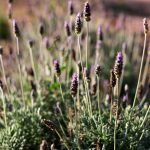


As autumn’s hue upon the landscape lies,
Let lavender rest, and let its vigor rise.
Cut back stems, to encourage fresh might,
And in the chill, its roots will take flight.
Your autumn’s whisper weaves stems to new grace—gentle cuts bless lavender’s quiet might to rise.